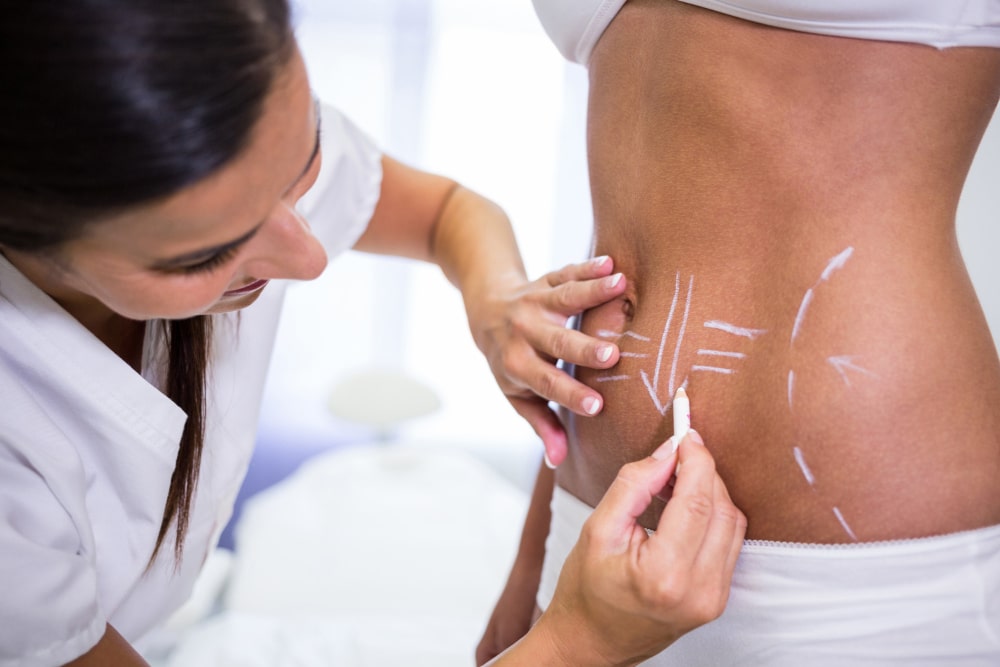
The demand for body contouring treatments is soaring, with the global aesthetic medical and surgical market’s body contouring segment projected to reach 2.3 billion euros in 2018, up from 1.5 billion euros in 2013. This growth is fueled by continuous innovation, introducing new ways to reshape the body and target stubborn fat.
In the past, surgical procedures like brachioplasty and abdominoplasty were the primary options. However, advancements have expanded treatment choices, providing safer and more affordable alternatives.
This article explores recent body contouring treatments, patient selection criteria, expected results, and potential side effects.

Typically, patients seeking body contouring treatments can be roughly grouped into two categories based on their expectations of treatment outcomes.
The first group tends to be more knowledgeable about available treatments, may have prior experience with some procedures, and have a clear idea of their desired outcomes. They generally have realistic expectations regarding what the treatment can achieve.
On the other hand, the second group is less informed about the available options, leading to unrealistic expectations about the results. Additionally, these patients may be less dedicated to following diet and exercise plans and are more likely to discontinue their treatment courses. Managing patients in this group can be more challenging due to these factors.
Many individuals are troubled by common concerns such as excess fat, cellulite, or stubborn pockets of fat resistant to traditional methods like diet and exercise. When considering these treatments, it’s crucial to take into account the possibility of body dysmorphic disorder (BDD). This condition is particularly relevant in the context of body contouring procedures, as they are frequently sought after by individuals affected by BDD.
To assess a patient’s suitability for treatments like Belotero, it’s crucial to gather a thorough medical history, including details about their exercise and dietary habits. Understanding their motivations and expectations for treatment is equally important.
Patients with unrealistic expectations may end up dissatisfied, so clear and realistic pre-treatment information is essential. This should include discussing the need for repeat treatments and the gradual onset of results typical for non-invasive procedures.
Documentation through pretreatment photography and volume measurements helps track progress effectively. Screening for Body Dysmorphic Disorder (BDD) using tools like the Body Dysmorphia Disorder Questionnaire (BDDQ) is vital to rule out patients with such conditions. Treating patients with unrealistic expectations can lead to dissatisfaction and complaints, so it’s generally best to avoid treating them altogether.
Over the last two decades, significant advancements in the aesthetic medical device sector have introduced innovative body contouring treatments. While traditional methods often involve thermal injury to induce adipocyte apoptosis (programmed cell death), newer therapies aim for selective fat cell targeting without the side effects of prolonged tissue heating or cooling.
Here is a concise overview of the 5 emerging strategies:
Commonly known as fat freezing, targets fat cells by inducing apoptosis through exposure to low temperatures. This process selectively affects adipocytes while sparing other cells. Following treatment, an inflammatory response occurs, leading to the removal of dead fat cells by the body’s immune system.
This results in a reduction in volume and reshaping of subcutaneous tissue. Cryolipolysis devices combine freezing with skin protection and vacuum mechanisms, making them suitable for all skin types.
Minimal side include post-treatment sensations like paraesthesia, bruising, and erythema, with manageable pain often alleviated by medication. Optimal results typically require repeat treatments over four to six months.
RF treatments utilize radiofrequency waves to generate heat, promoting deep tissue and skin heating. This process induces vasodilation and inflammatory changes, leading to dermal thickening and restructuring, as well as thickening of deeper connective tissues.
Specifically targeting adipose tissue, heating to temperatures between 43°C-45°C triggers selective apoptosis in fat cells, resulting in volume reduction within 3-8 weeks post-treatment. Multiple sessions are often necessary to achieve desired outcomes.
Common, short-lived effects include erythema. While RF devices have safety mechanisms to prevent skin overheating, operator-dependent factors may still lead to complications like burns.
Older monopolar RF devices may result in uneven skin penetration, potentially causing irregularities in fat breakdown and surface contour. Bipolar or multipolar RF handpieces offer better penetration depth predictability, yielding more consistent results.
LLLT is an innovative method for body contouring, employing infrared or near-infrared light exposure to alter body composition through direct and indirect mechanisms. By influencing adipocyte metabolism and regulating leptin levels, LLLT promotes changes in body fat distribution.
FDA-approved lasers within the wavelength range of 532nm-635nm are utilized for this purpose. However, achieving optimal results typically necessitates multiple treatment sessions.
Moreover, LLLT boasts a low-risk profile, making it an attractive option for individuals seeking non-invasive body sculpting solutions.
(HIFU) is a novel body contouring method initially employed for facial tightening and lifting. By inducing coagulative necrosis in the subcutaneous layer, it prompts new skin growth with tightened and reduced volume, typically observed around 12 weeks post-treatment. HIFU involves multiple sessions, suits all skin types, and boasts minimal side effects.
This treatment, approved in 2012 for reducing submental fat (double chin), works by dissolving fat cells upon injection into adipose tissue areas. Its process triggers a mild inflammatory response and phagocytosis, resulting in permanent fat reduction.
The targeted action minimizes damage to surrounding tissues, and it doesn’t elevate plasma lipid levels. Clinical trials in Europe, including a phase III trial with ATX-101, have shown promising results, including submental volume reduction with minimal adverse events and no increase in skin laxity.
Typically, several sessions spaced over weeks are needed for optimal outcomes.

The body contouring sector within aesthetic medicine continues to expand, with advancements in technology and the introduction of new devices annually.
Effective patient selection is paramount in managing expectations and ensuring favorable outcomes. Choosing the optimal instrumentation for clinical practice involves considering factors such as cost, available space, staffing resources, and patient demographics.
By carefully evaluating these elements, practitioners can provide tailored treatments that meet the diverse needs of their patients in the evolving landscape of body contouring procedures.
Join our newsletter to receive latest news and offers

Medicle MD Ltd
Reg. Number: 14317237
Address: 27 Old Gloucester Street,
WC1N 3AX London,
United Kingdom